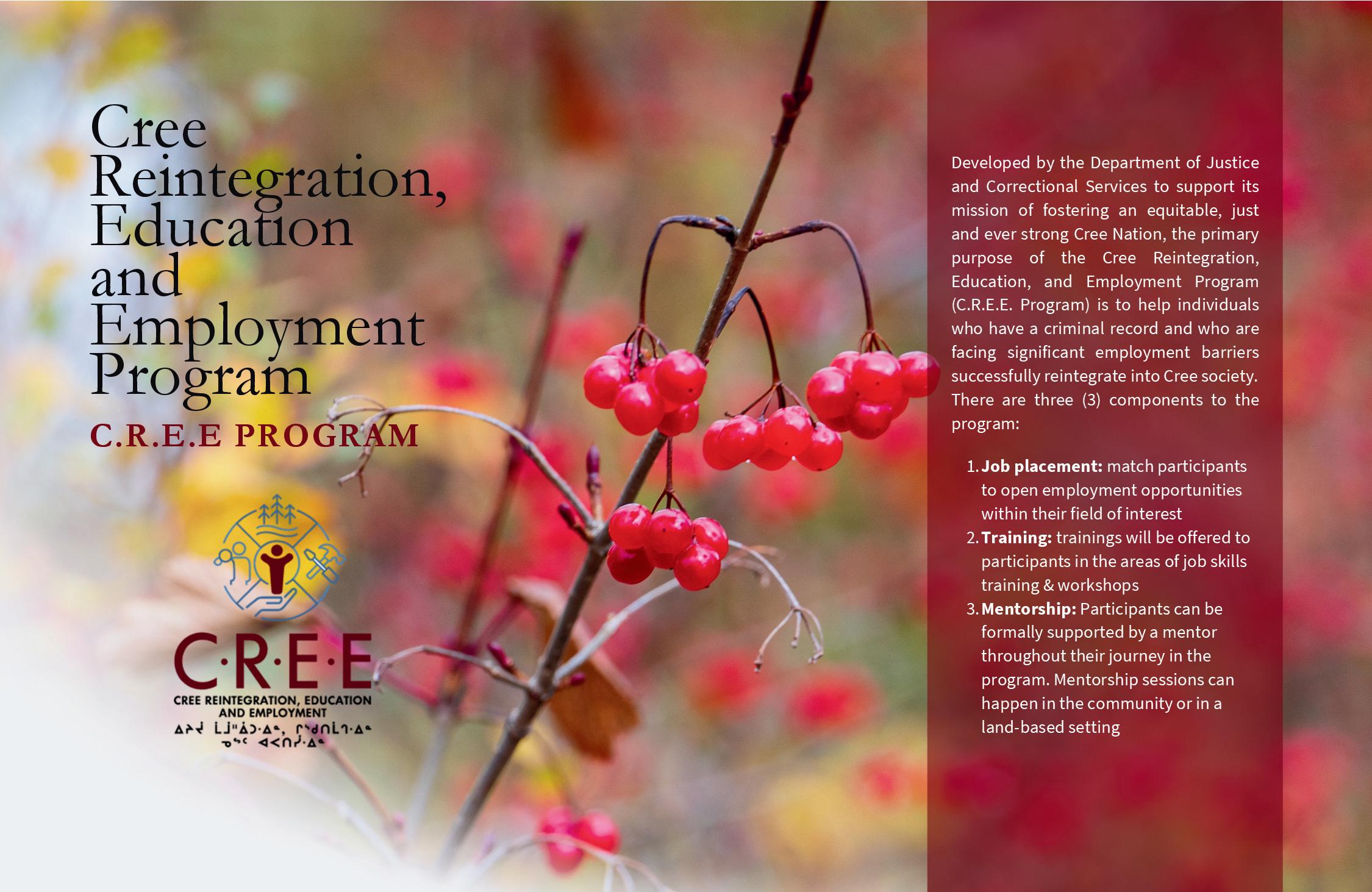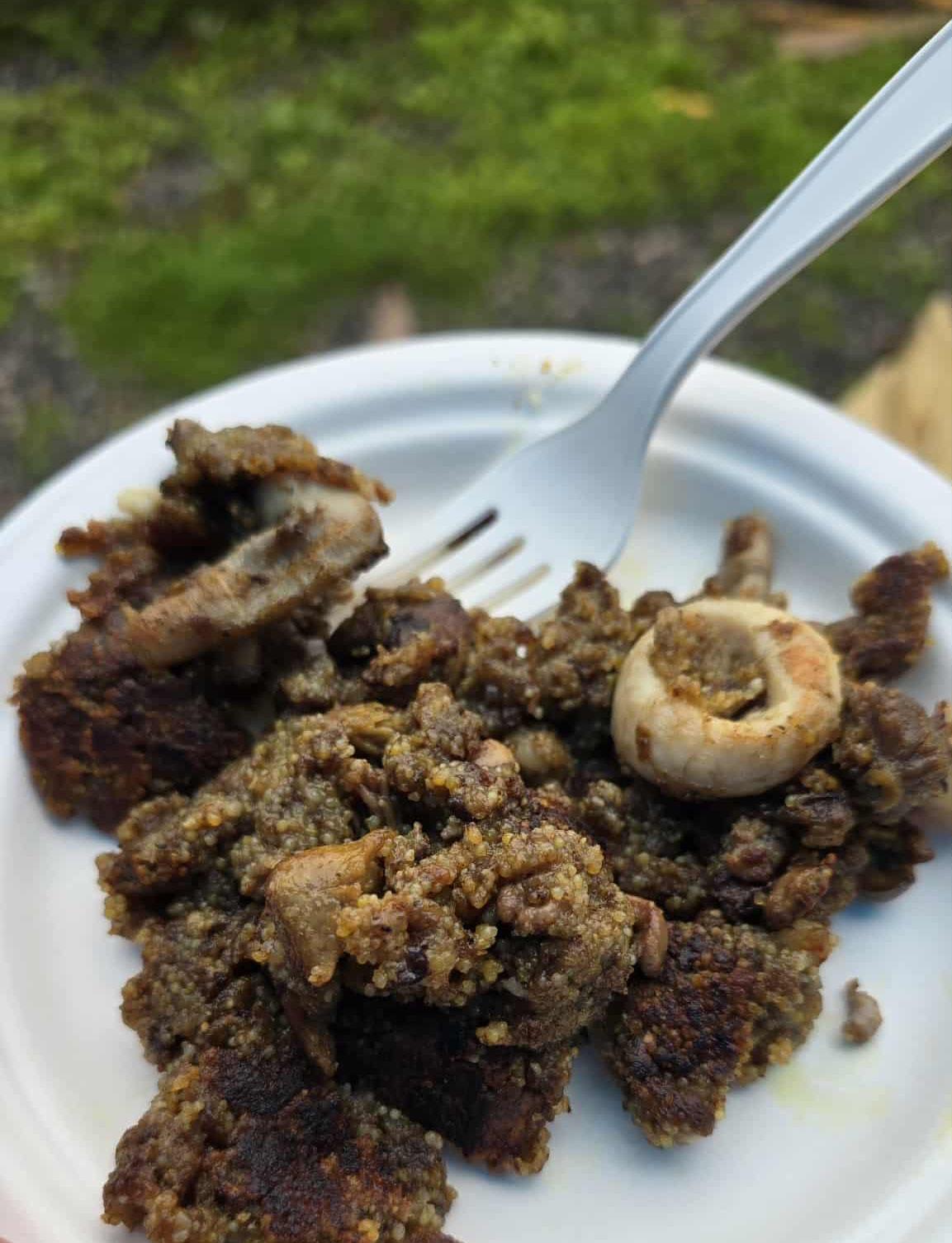




by Will Nicholls
Leonard Peltier celebrated his 84th birthday on September 12, his first outside prison walls since 1976. Last January 19, just before he left office, US President Joe Biden commuted Peltier’s sentence to indefinite home arrest.
Peltier was the one of the longest-serving Indigenous prisoners in the United States. Many felt he was a political prisoner rather than someone jailed for allegedly killing two FBI agents in cold blood.
Peltier was a member of the American Indian Movement, and the group had gone to the Pine Ridge Reservation in the early 1970s because Tribal chairman Richard Wilson had created a private militia called Guardians of the Oglala Nation or GOON. They were alleged to attack political opponents of Wilson.
In February 1973, AIM and Lakota enacted an armed takeover of Wounded Knee. In June 1975, two FBI agents entered the reservation looking for Jimmy Eagle for questioning. They reported following a red and white vehicle. When it stopped a firefight broke out and two FBI agents were killed.
Peltier fled to Canada and was arrested in February 1976 by the RCMP and extradited to the US in December. This was based on FBI documents that Canada’s then-Solicitor General would later say contained false information.
An Indigenous woman claiming to be Peltier’s girlfriend said she saw the killing. Other people including Peltier said she didn’t even know Peltier and wasn’t present during the incident. Later, she would say the FBI coerced her into making the claims. She wasn’t the only witness to recant their testimony saying they too were coerced by the FBI. The FBI would change the vehicle description to orange and white to match Peltier’s.
Even James Reynolds, the US Attorney who supervised the prosecution against Peltier, wrote a letter to President Biden that read, “I have realized that the prosecution and continued incarceration of Mr. Peltier was and is unjust. We were not able to prove that Mr. Peltier personally committed any offense on the Pine Ridge Reservation.”
When Peltier turned 80, he released the following statement:

Greetings my Friends, Loved Ones, Relatives, Supporters!
When I was a child, I looked to my Elders to learn how to live within Mother Earth’s rhythms.
I yearn to sit by the fire with my loved ones and have our children look to me to learn the mysteries of Mother Earth. I want to laugh, share the pipe, and gaze into the eyes of a woman who does not carry handcuffs.
I have become an Elder. I suppose, in many ways, I am still the nine-year-old who founded The Resistance among my peers at Wahpeton Boarding School, the young man willing to sacrifice everything to protect my people, and the young man who worked hard and played hard when the chance arose.
At the same time, I feel every second of these past eighty years wreaking havoc on my body.
I have been losing my eyesight, but my inner vision is not that of an old man. I long to get out there and work. My mind is filled with ideas to combat the greed and corruption that spread like a poisonous mold through the halls of those who govern us.
Happy Birthday Leonard Peltier, finally home with family and friends.




514-272-3077 / ads@nationnews.ca / 514-943-6191 // HEAD OFFICE: P.O. Box 151, Chisasibi, QC. J0M 1E0 www.nationnews.ca // EDITORIAL: will@nationnews.ca news@nationnews.ca // ADS: Donna Malthouse: donna@beesum.com // SUBSCRIPTIONS: $60 plus taxes, US: $90, Abroad: $110, Payable to beesum communications, all rights reserved, publication mail #40015005, issn #1206-2642 // the Nation is a member of: The James Bay Cree Communications Society, Circle Of Aboriginal Controlled Publishers, Magazines Canada Quebec Community Newspaper Assn. Canadian Newspapers Assn. Les Hebdos Sélect Du Québec. Funded [in part] by the Government of Canada // ONLINE AT: www.nationnews.ca | facebook.com/NATIONnewsmagazine | Twitter: @creenation_news




A AUDITED the Nation 3
Cree Health Board continues to innovate during leadership transition
by Patrick Quinn, Local Journalism
Interim Cree Health Board executive director Christina Biron says she is focused on continuity as she takes the helm from Daniel St-Amour, who is retiring after 16 years.
Previously assistant executive director of Miyupimaatisiiun, which is responsible for most CHB services, Biron has worked alongside St-Amour since 2018. Biron started as a summer student at age 15 and has had a permanent job since 2006; her deep understanding of the board’s operations made her a natural choice to guide this transition.
“It’s easier for me to slip in because of my longstanding involvement and working with the directors,” Biron told the Nation. “We’re taking two steps back to see the whole picture, ensuring our priorities are still at the forefront, because there are so many moving pieces.”
Biron said the board is conducting an internal analysis with the executive and new chairperson Jeannie Pelletier, elected last November. Pelletier suggests they may hire a Cree director to communicate their strategic direction.
“It will be a key person for expanding creative ways of ensuring people know where we want to go and that they see themselves in it,” said Pelletier. “We want people to understand this will be the pathway to our health, incorporating our Eeyou ways of knowing, worldview and what kept our ancestors healthy.”
Pelletier promotes accessible and family-centred primary care, which she introduced as director of Chisasibi’s Community Miyupimaatisiiun Centre (CMC) and is now being implemented in Waskaganish. Preparatory work is underway at all CMCs to expand this approach.
“People were tired of repeating their story,” said Pelletier. “When they have a

team taking care of their family’s needs, they’re less likely to go to emergency. We can catch things before, and they develop a trusting relationship with their provider.”
Primary care assigns a social worker to patients, who are spared time in a waiting room, and ensures that these workers aren’t pulled away to emergency calls.
“This model enhances client experience and the continuity of care, especially for those with chronic conditions,” affirmed Biron. “A walk-in clinic is often more transactional. We’re fostering a more holistic and interdisciplinary approach to care delivery.”
Healthcare staff plan to use Waskaganish’s new CMC by the end of October. Edith Bobbish will also be the first chiskutimwaakin to provide midwifery services at a new birthing home in the community.
Other new services include an Elders home that will open in Chisasibi by late winter. While Chisasibi’s new $300 million regional hospital is at least five years away, its current facility is undergoing renovations to ensure it’s up to code. In March, the community bought its own medevac plane fitted with stretchers and equipment to stabilize patients until they reach a southern hospital.
“We are missing a lot of things,” Dr. Darlene Kitty recently told CTV News. “Certainly, an operating room and surgeons. We don’t have a CAT scan or an MRI.”
The new hospital will greatly reduce the numbers sent south for care with expanded hemodialysis, medical imaging, chemotherapy treatments, obstetrical beds and palliative care. There are currently over 200 long-term patients staying at Montreal’s Espresso Hotel.

Pelletier suggested a more visitor-friendly space may be needed.
As the new hospital will require an estimated 700 staff members, the board is investing in workforce development with in-house training and certified programs in partnership with the Cree School Board, McGill University and John Abbott College. Enrolment is steadily growing in nursing and social work programs.
Plans include a healing centre in Chisasibi for the CHB’s new addictions department and Nishiiyuu Miyupimaatisiiun, which offers landbased healing and traditional medicine initiatives.
The isolated Mirage camp, which hosts land-based programs, is where St-Amour spent his last week as executive director in training sessions with the emergency team. A new mobile health unit designed with the Canadian Red Cross will bring emergency care directly to Cree communities.
“The goal is to be autonomous in our response or at least provide a faster response to an emergency,” said St-Amour.
A new group conferencing service called Peyakuutenuu Niishtam has been designed to help families known to Youth Protection navigate difficult situations. “When the youth is not doing well, it impacts the whole family, so it only makes sense to offer services that are more inclusive,” explained Pelletier.
Above all, the priority is to demystify access to care. As Biron settles into her new role, she aims to create partnerships to better address the social determinants of health.
“We know healthcare only accounts for 20% of overall health outcomes,” said Biron. “We need strategic partners to create healthier communities.”


On September 23, the Cree Nation Government and Quebec announced a $6 million agreement over four years (2025-2028) to support Indigenous leadership in biodiversity conservation. Cree-led environmental projects will be supported by the newly launched Eeyou EcoFund.
Quebec’s 2030 Nature Plan, in partnership with First Nations and the Inuit, aims to protect 30% of the province. When the nearly billion-dollar strategy for achieving this vision was announced a year ago, about 17% of Quebec was protected.
“This partnership will enhance our communities’ capacity in conservation, advance our priorities and ensures that Cree knowledge and leadership continue to guide the protection of our lands and waters,” said Nadia Saganash, the CNG’s director of Quebec-Indigenous relations.
Cree communities and organizations are encouraged to work on ecosystem restoration, habitat protection, conservation planning, promotion of traditional knowledge and environmental resilience. The goal is to slow climate change and promote responsible resource management.
“There were a lot of interesting projects proposed before this was officially launched,” said Olivier Kölmel, the CNG’s manager of eco-investments. “I’m expecting an influx of diverse projects of all types – the initiatives have to come from the ground up.”
Financed by Quebec’s Environment Ministry, the Eeyou EcoFund’s initial focus is on biodiversity conservation, with forthcoming funding for water protection and climate change adaptation.
Acceptable projects may include anything from land-based restoration and monitoring to community-based workshops and education programs. Some examples promoting biodiversity

are wetland recovery, shoreline planting, wildlife corridors, invasive species control, eco-tourism trails, water sensors, weather stations and land-use maps.
“We’ve had calls about intergenerational activities where Elders would take youth out on the land and share the knowledge and culture,” Kölmel told the Nation. “The Cree way of life is intertwined with stewarding the land, these practices that have been central to Cree survival for millennia.”
Potential projects include youth land camps and environmental awareness workshops that promote community engagement. The EcoFund will be co-managed by a committee of Cree Nation representatives and one observer from Quebec. A separate steering committee will be split between CNG and Quebec representatives.
Kölmel cited a study published this summer on James Bay’s eelgrass loss as an example of what the EcoFund could support. With La Grande and other rivers bringing in sediment and contributing to riverbank erosion, the cloudy water was found to block sunlight required for healthy eelgrass, an important food source for migrating geese.
The Cree Nation’s development of Indigenous Protected Conservation Areas (IPCAs) is perhaps a higher priority under the fund’s mandate. Quebec’s conservation goals are designed to meet global targets under the KunmingMontreal Global Biodiversity Framework adopted in 2022.
Last December, Cree and Quebec governments announced the creation of Nibiischii National Park in the Mistissini area, the province’s first national park to be operated by a Cree community. Around the same time, the CNG launched the first of four phases of community consultations to expand its protected areas, which should be completed in 2026.
“The first phase was information sessions that wrapped up early spring,” said Chantal Otter Tétreault, the CNG’s protected areas coordinator. “We just finished the second phase, which is data collection workshops within all the communities. Next phase is to go back to communities with these proposals and see what mechanism fits best these needs.”
Working with Nature Conservancy of Canada to refine previously selected boundaries and propose new areas, the CNG is collecting information from land users to develop conservation initiatives. It hopes to expand a land keepers’ program for monitoring and management of these areas.
“They’re still negotiating with Quebec for more long-term funding,” said Tétreault. “Land keepers are safeguarding the territory and educating non-Natives and Natives on how to carry out activities on the land. We’re hoping to expand the land keepers to other communities and give them more responsibilities in protected areas.”
As the province works towards Plan Nord’s even more ambitious target of 50% conservation by 2050, the CNG is exploring mechanisms like the Aboriginal-Led Protected Areas legislation. Meanwhile, the proposed Wiinipaakw National Marine Conservation Area would extend these protections to the offshore waters of eastern James Bay.
“There is that opportunity with the increase of the protected area network to increase eco-tourism and economic spin-offs for the green and blue economy,” Tétreault asserted. “We’ll continue to work with the communities to protect what we can with whatever means possible.”







Premier François Legault announced September 25 that the Quebec government would be abandoning its controversial forestry reform bill, which had drawn near unanimous condemnation since its introduction last spring.
Bill 97 proposed dividing the province’s forests into three zones: one prioritizing conservation, one primarily for timber production and a third for multiple uses. “Priority forest management zones” would have entrusted large areas to industry, concentrating the impact of logging.
First Nations leaders firmly rejected the bill. Noting that it gave industry the right to bypass Indigenous consultations, the Assembly of First Nations Quebec-Labrador argued that impacted territories were essential to cultural activities.
A week before Legault’s announcement, a coalition of First Nations, environmental organizations, outfitters and unions representing more than 20,000 forestry workers released a statement declaring the bill unacceptable.
“Bill 97 is one of the most unifying pieces of legislation ever put forward – unifying in opposition,” stated the collective. “The forest must be regarded as a major societal issue. The status quo is not an option either. However,
any new version must fully respond to the requirements expressed by the First Nations and all stakeholders concerned.”
The group wants a meeting between all parties to ensure the reconciliation of ancestral rights, the sustainability of the forest and the quality and stability of employment in the forestry sector.
Protests throughout the summer led to tense standoffs. An Indigenous resistance group called the MamoMamu alliance sent eviction notices to forestry companies, staged road blockades and raised teepees to assert sovereignty.
Facing opposition from even the forestry industry, the recent ministerial reshuffle excluded former minister of natural resources and forestry Maïté Blanchette Vézina, who introduced the legislation. Jean-François Simard has been named the new minister.
House-Lameboy re-elected in Chisasibi
Daisy House-Lameboy was re-elected Chief of Chisasibi August 29 with 58% of the community’s votes, ahead of challenger Robbie Tapiatic with 42%. In Chisasibi’s runoff election for Deputy Chief September 13, Thomas Shem bested Natasha Bates.
House-Lameboy was first elected Chief in 2020 after serving 13 years as Deputy Chief. She celebrated the community’s perseverance throughout her first term’s challenges, including the Covid pandemic, water crisis, forest fire evacuations and the loss of community members.
“Through it all, we’ve shown persistence, strength and unity,” said HouseLameboy. “I am truly humbled by your trust.”
One community member, John Paul Fireman, noted that her great-grandfather Peter House was Chief exactly a century ago, from 1920 to 1930.
As the largest Cree community rapidly grows, HouseLameboy highlighted new social and private housing initiatives. She emphasized partnerships with Cree organizations that have resulted in a new birthing home, schools, a greenhouse and a local college.
Cree involved in bid for HBC building
The James Bay Eeyou Corporation is offering to purchase the former Hudson’s Bay Company building in downtown Montreal in partnership with JHD Real Estate. The $400 million project proposes preserving the iconic building and transforming it into a space highlighting Cree
history, culture and contributions to Quebec.
“This building represents much more than a commercial acquisition,” said James Bay Eeyou Corporation President Henry Gull. “It embodies more than 350 years of shared history between our people and the Hudson’s Bay Company. We see this project as a way to breathe new life into the building while preserving its soul.”
The project would open in 2029 and include a museum on the fur trade, an Indigenous cultural centre, a hotel, commercial space and subsidized condominiums for Indigenous students.
Filing for bankruptcy last March, HBC was North America’s oldest and longest lasting company. The bidding process has not yet begun, and the sale would require zoning approval from the city.
Since the first HBC trading post established in modern-day Waskaganish in 1668, there has been an intricate connection between the company and the Cree Nation. The Cree were key providers of fur pelts through a credit system that supplied them with tools, foods and other goods.
“There are people that worked, or shopped, or picked up their mail at the Hudson’s Bay Company back in the day,” Gull said. “We return today not to trade furs, but to reclaim a place that our ancestors never left in their hearts. I hope they hear our voice and give us an opportunity to reclaim some of our history.”



During its annual members’ assembly in OujeBougoumou September 10, the Cree Native
Arts and Crafts Association celebrated the region’s cultural leaders at the Eeyou Istchee Achievement Awards.
“Our artists inspire us to carry our culture forward,” said CNACA president Dwayne Cox. “This is not only about honouring excellence, but also honouring our traditions, our stories and the future we are building together.”
Host Lance Cooper said the biennial gala highlights the deep passion with which Cree creators “transform materials into works of beauty.”
Building on the gathering’s theme – “The Future is Eeyou Made” – the ceremony looked back to cultural trailblazers and forward to young artists exploring new technology.
Along with presentations from local arts committees and Cree entities, the assembly featured discussions about pricing and inflation, social media marketing and intellectual property rights. CNACA executive director Dale Cooper said he’s passionate about expanding the region’s artisanal industry.
“CNACA wants to be at the forefront of it all,” said Cooper. “We’re even

by Patrick Quinn, Local Journalism Initiative Reporter


having discussions about artificial intelligence and what that means to art in Eeyou Istchee. It’s important the artists benefit economically from their talents.”
A growing source of revenues is the organization’s Wachiya store, which opened a year ago in Old Montreal. Along with its online version, Wachiya showcases Cree artists provincially, nationally and internationally.
“Our goal has been to educate our customers about Cree artisans, ensuring their stories are told,” Cooper explained. “The storytelling really drives the message home. We’re trying to build a sustainable and social economy where the artists are paid directly and can continue their skills – it keeps the culture alive.”
The Wachiya store raises the profile of artists like Beth Sealhunter, winner of this year’s contemporary arts award. Learning beadwork in the bush from her grandmother nearly 50 years ago, Sealhunter thanked the organization’s leadership for pushing her to create
more, dating back to former CNACA head Sheila Orr.
“I didn’t think I’d want to be recognized for something I’ve done so long,” said Sealhunter. “Receiving that feels amazing. When I create, I’m in prayer and pray for whoever wears my creation – my hands are their hands.”
Selling her beaded jewellery since she was a teenager, Sealhunter is also known for her dreamcatchers, belts, little drums and silhouette paintings. After winning the 2021 Jamesian award from Nord-du-Québec en création, she invested her winnings in a new sewing machine to expand her work.
“I have so many ideas of what I’m going to do with my sewing machine,” Sealhunter said. “I was going off my medium one time and my son said, ‘I think you should continue on, people voted for you for a reason’. He must have been eight. It brought my contemporary work to where it is now.”
Christopher Cox Jr., winner of the traditional arts award, is one of the young-
est and most active snowshoe-makers. Cox leads workshops in Cree communities and recently completed a four-week course in Eastmain.
“It’s very important to have more knowledge keepers for the traditional way, from the tree to the end product,” said Cox. “The Elders are starting to pass away so we’re trying to preserve the tradition.”
The gala honoured six Cree trailblazers who have passed on but whose legacy remains strong: Margaret Loutit, Gracie Orr, Thomas Coon, Steven Sheshamush, Sandy Masty and Andrew Natachequan. Living legends David Bosum, Edwin Jolly, Helen Hester and Jean Masty were named to the trailblazers’ hall of fame.
The lifetime achievement award was given to Evadney Edwards, a traditional artist from Mistissini who specializes in moose-hide and miniature products. Jerry Coon accepted the arts leadership award on behalf of Mistissini’s cultural department, declaring it “powerful moti-

vation to continue pushing boundaries for Cree arts.”
Christine Petawabano won the Buckley Petawabano award, named for the icon of Cree media, while Melanie Lameboy earned the multidisciplinary arts award. Jo-Marie Einish won the artist entrepreneur award, honouring their two-spirit advocacy and business acumen while creating handmade soaps, candles and beadwork.
The rising star award went to painter Darwin Sam, who creates walking out banners. Graphic designer Mariah Shecapio Lacroix won the self-innovator award, while Demisha Gilpin was named youth artist of the year.
“I see a lot of emerging talent we have to nurture, making sure they have the proper skills and knowledge to keep that moving forward,” said Cooper. “We’re in a growth phase, so there’s definitely new opportunities coming to light.”
Wemindji 13-year-old Demetrius Asquabaneskum said that winning the
best fiddler award “truly means a lot.”
The event featured musical performances by Diane Bosum, Jossée Bernier and performing arts award winner Miikuun.
During CNACA’s tour of OujeBougoumou’s Aanischaaukamikw Cree Cultural Institute, visual arts award winner Lindsay Visitor was inspired by Paula Menarick’s presentation of the ancient beaded hood. She suggested creating her own version from caribou hide and “wemin” traditional paint from her community of Wemindji.
Recognized for her painting, drawing, digital art, beadwork and crafts, Visitor said she learned about acrylics, photography and filmmaking at art school in Montreal. Recent digital artwork on her Redbubble account has been turned into prints for clothing.
“Before I got the award, I wondered if I should put my art on the backburner, but then out of the blue this happened,” shared Visitor. “This is definitely motivating me to finish some projects and start new ones.”
"When I create, I’m in prayer and pray for whoever wears my creation – my hands are their hands”
- Beth Sealhunter
You may be eligible for compensation. Help is a phone call away.
As part of the First Nations Child and Family Services and Jordan’s Principle Settlement, Caregiving Parents and Caregiving Grandparents of Removed Children are now able to submit a Claim for compensation. This includes the biological and adoptive parents, biological and adoptive grandparents and First Nations Stepparents of a First Nations Child who was removed from their home between April 1, 1991, and March 31, 2022, by Child Welfare Authorities.
You do not need to provide child welfare records or share your story to submit a Claim. And you do not have to work through the Claim Process alone. Free support is available.
Across the country, Claims Helpers are available to help at no cost. They are ready to support you in person, by phone or video call – in both English and French, and also in some Indigenous languages.
Most Claims Helpers are Indigenous and are connected to their communities. They are trained in cultural safety and can help you through your Claim at a pace that works for you.





The Cree IELCC Fund is designed to fund projects/activities that foster the education, Cree culture and language, as well as health and wellbeing of children 0 to 6 and their families.



All projects and activities must also ensure that no children are left behind: activities must be accessible to all children, no matter their level of ability or special need.

















Hesterville camp is quickly becoming a hot tourist destination
by Jamie Pashagumskum | Photos by Charles J. Hester
On the shores of the Rupert River 18 kilometres from Waskaganish sits one of Eeyou Istchee’s best kept secrets. Hesterville is a family-run fishing camp on the Hester trapline.
“We’re not a fishery, but we never hesitated to share our fish with people,” said Charles J. Hester, who manages the camp.
The camp is renowned for its traditional cuisine during the annual cisco fish run. Cisco spawning season lasts from August through September, drawing visitors for the “Hesterville Experience”, which includes smoked fish and fresh caviar.
“When we make caviar, it’s gone in 10 minutes,” Hester said. “You have to be here when it’s cooked or you’re going to miss it. It’s something we love doing and it brings the whole family together.”
Established in 2016 by his father, Hester runs the camp with his siblings, who all have cabins on-site. At the height of spawning season, the camp will catch between 100 and 200 fish per day. They set a self-imposed limit of 1,000 fish per season, but will go over that limit if there are requests from the town for more fish.
“We do it because we like providing traditional meals for people who can’t go fishing themselves like Elders or people from out of town,” Hester noted.
Over the years the camp has welcomed and fed guests from every Cree community including Moose Factory and Moosonee.
The camp has been featured on an Indigenous cooking show aired by Télé-Québec. Eeyou Istchee Tourism approached Hester on the possibility of marketing the camp as a legitimate tourist destination.
Marketing may not be the camp’s problem as word has spread, and people come from all over for Hesterville fish. The only promotional activities done for the camp are occasional social media posts and Hester recently had the camp added to Google Maps.
Now visitors come from everywhere, including from the south, the Algonquin, Naskapi and Innu Nations.
Waskaganish has a fishery funded by the Niskamoon Corporation, providing five fish per person to community members. But when they run out of fish people are often referred to Hesterville.
Waskaganish Chief Greta Whiskeychan Cheechoo commends the Hester family for the popular initiative while promoting Cree traditions that have been passed down through generations.
“They support and preserve the Cree way of life,” Chechoo said. “The Hesterville fishery plays a vital role in
safeguarding Cree knowledge and traditions, ensuring they continue to thrive for future generations.”
Archeological surveys of the area show it has been used as a traditional fishing site for almost 4,000 years. Hester refers to them as sacred sites.
Education is a big part of the experience. Hester says all the kids in the family help out, in effect training the next generation of fishers.
Not only Cree culture is on display at the camp. Hester says they have “cultural exchanges” with visitors from other backgrounds coming to sample Cree culture and share some of their own.
“We have an Iranian teacher in the community and apparently, they have a fish in Iran that is very similar to the cisco. They asked us for some fish because they wanted to prepare it their traditional way,” Hester recalled.
The teacher and his family cooked their fish and brought it to the camp for all to sample.
“I found it very good, but it was a bit spicy for my liking,” Hester said, sharing a similar exchange with some workers from Sri Lanka.
“They said the same thing that they have a similar fish, and they asked for a few uncut, fresh fish so they could prepare their traditional meal, and they sent us a sample. It was good but again it was spicy. I guess they use lots of spices over there,” Hester said.
The Hesterville camp not only serves up smoked cisco and caviar, but they also offer boiled and fried fish, including pike and sturgeon.
The Hester family doesn’t charge for their services, but with the ever-growing demand they are considering incorporating the camp into a commercial fishery or a tourist destination.
Hester said they have had guests stay overnight or for the weekend and local entities often request use of the site for company outings.
The business idea is still in the discussion stage within the family, but Hester said there is a possibility of a pilot program for next season. If the family does decide to open the camp for tourism, they will make that announcement by spring.















by Xavier Kataquapit
Iam the product of many thousands of years of evolution, as are you. I grew up on the land in the far north of Ontario following in the footsteps of my Cree ancestors of the great James Bay and Muskego. I speak my Cree dialect based on a language that is ancient, and I understand the history of my people and our connection to Mother Earth.
My people lived the nomadic life of hunter gatherers for thousands of years, and this is knowledge that I learned from my parents and Elders. I grew up on the land in Attawapiskat, but I’ve also lived and worked in cities and towns of southern Ontario. I have travelled to 35 countries, learned about other cultures, foods, music, issues, life and filled my eyes with incredible and beautiful images.
All of these experiences gave me a real appreciation for Mother Earth. I am in awe of what a wonderful planet we
I have almost 30 years sobriety and being in recovery. In my world I needed to research and write about many things: drug and alcohol addiction; how corporations operate, dealing with global warming and its causes; the incursions by government on First Nation lands without free, prior or informed consent; the pollution caused by resource development; the reality of racism and homophobia; and the global domination of wealth inequality. A 2023 Oxfam report states that “81 billionaires have more wealth than 50% of the world combined.”
The responsibility of being a journal

opment that causes global warming and is destroying our world.
We need to stand up to the system that allows a small group of billionaires to control everything. We have to think about the two wars that could turn into a nuclear conflict end our civilization either by accident or design. We need to think about the fact that global warming is causing severe weather, terrible forest fires, floods and storms all over the planet.
We need to think about what our federal government is doing with Bill C-5 and in Ontario with Bill 5 which will result







